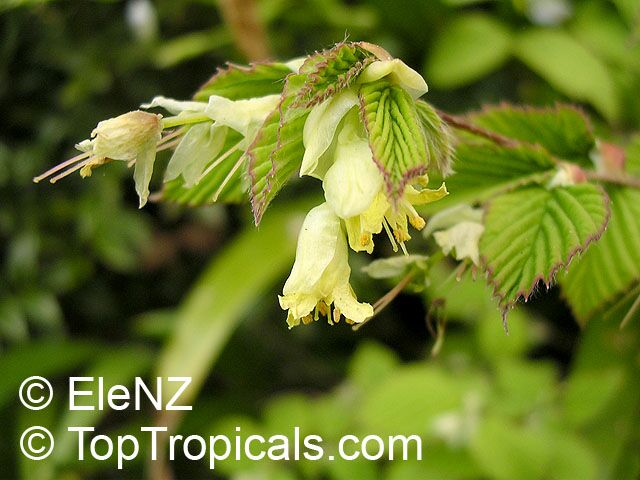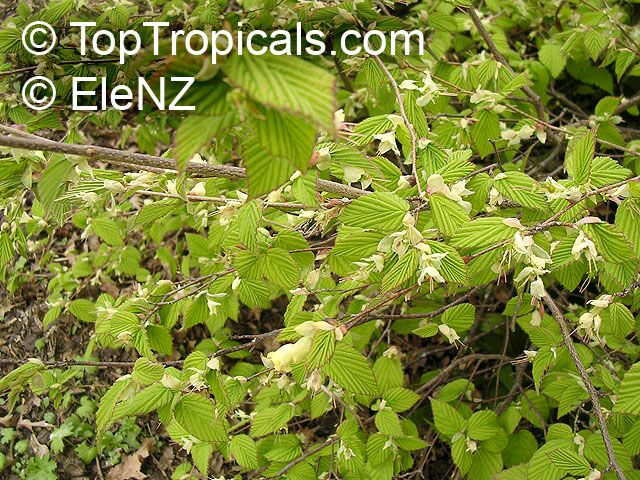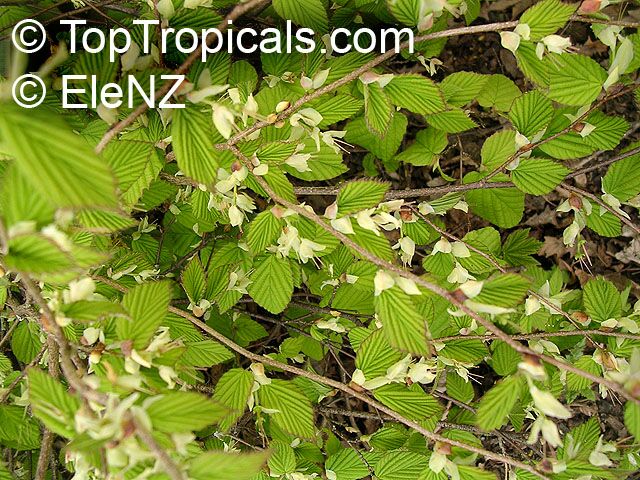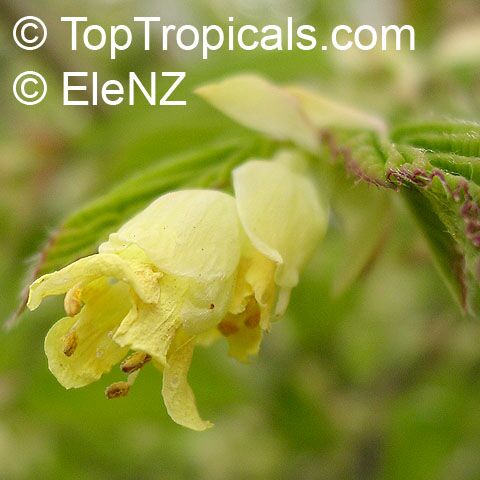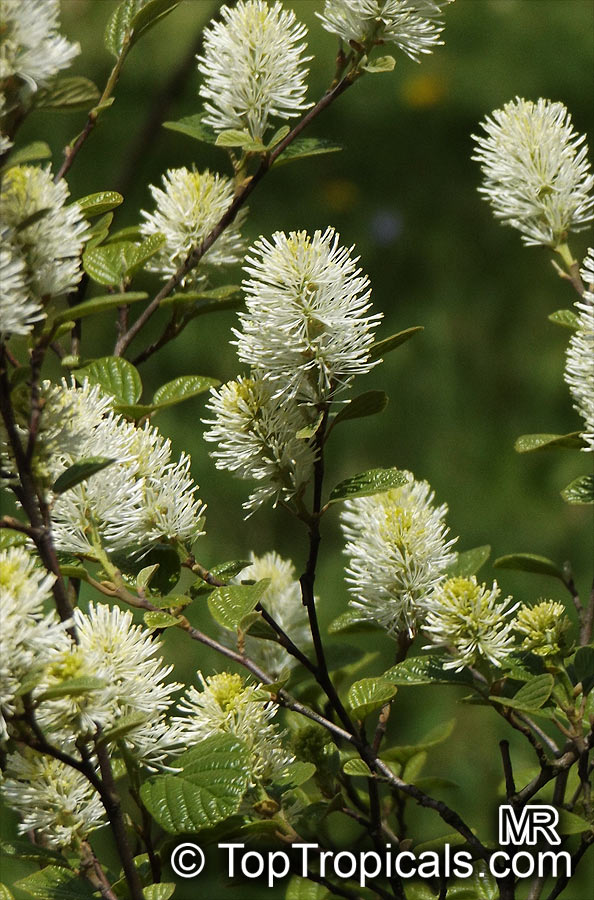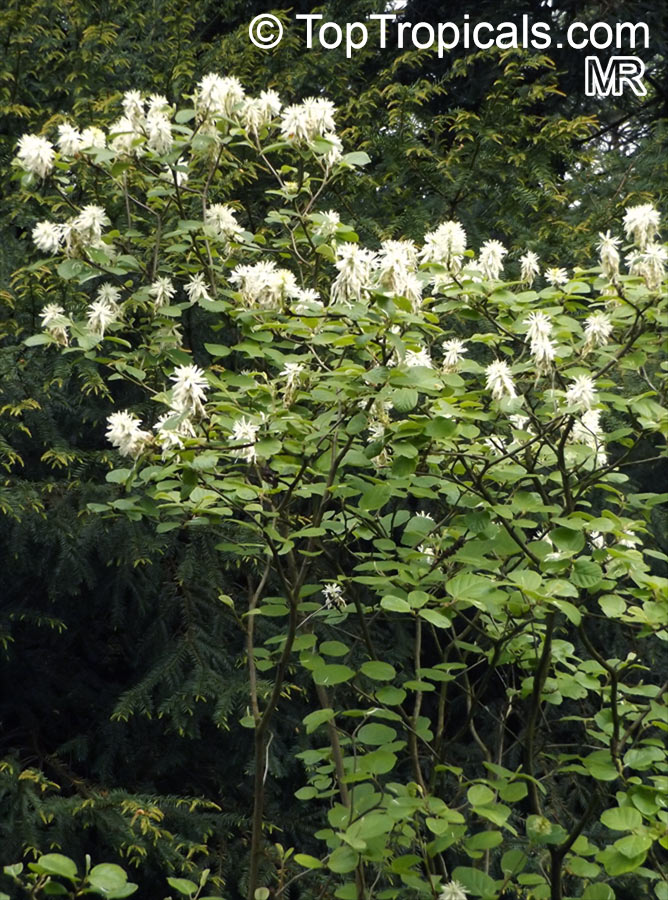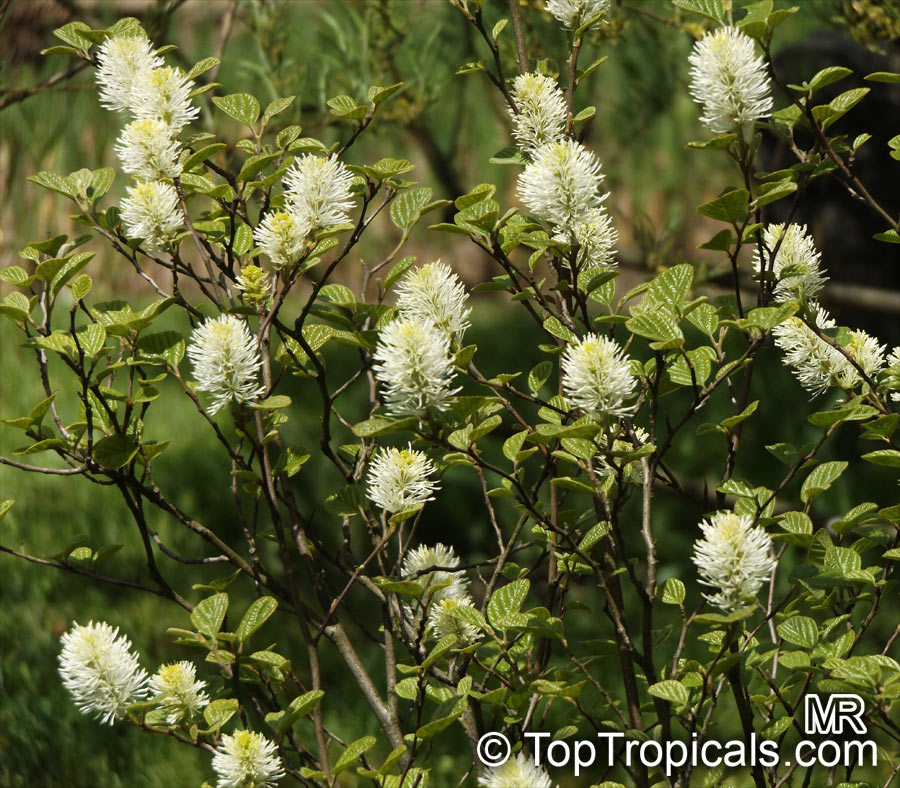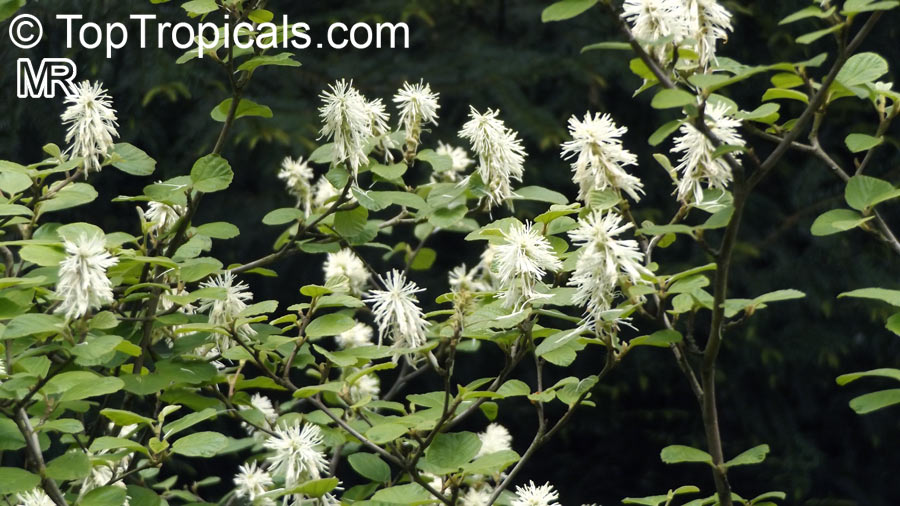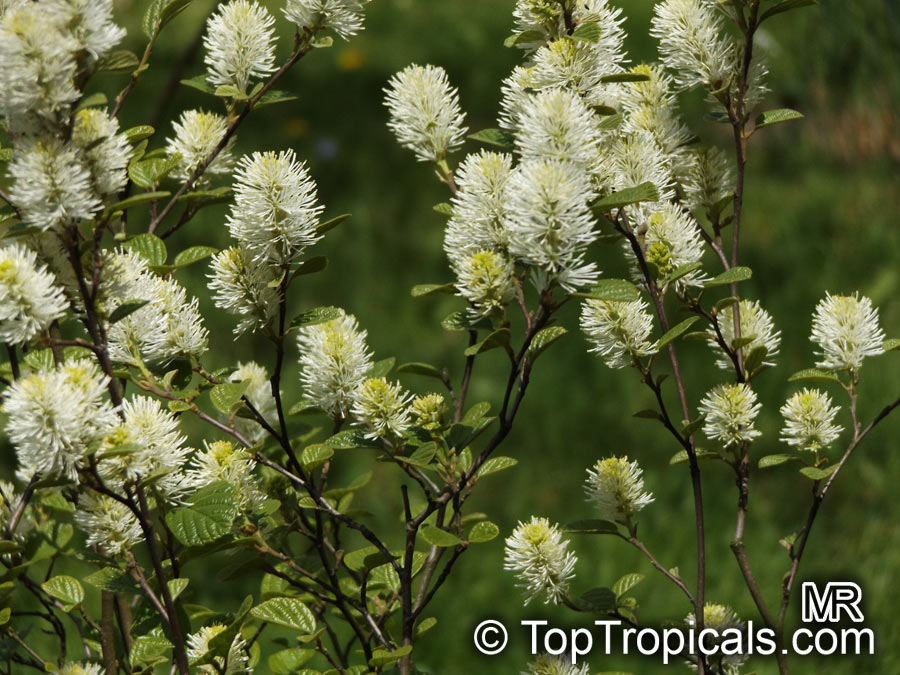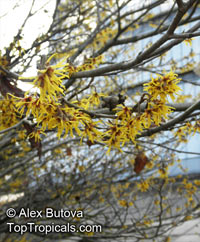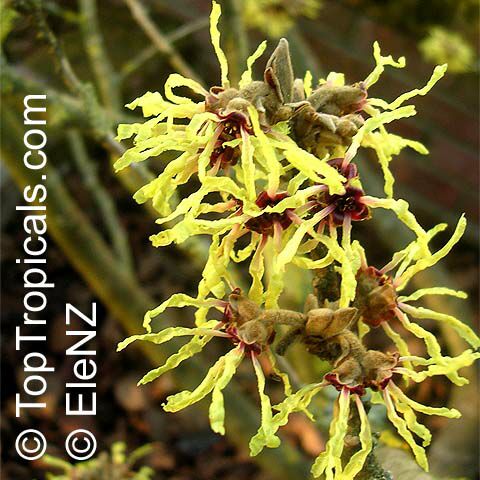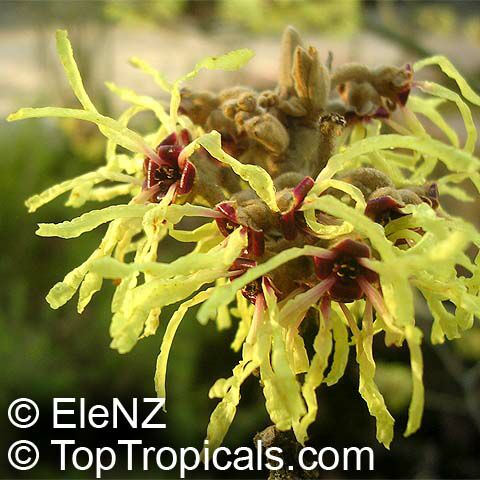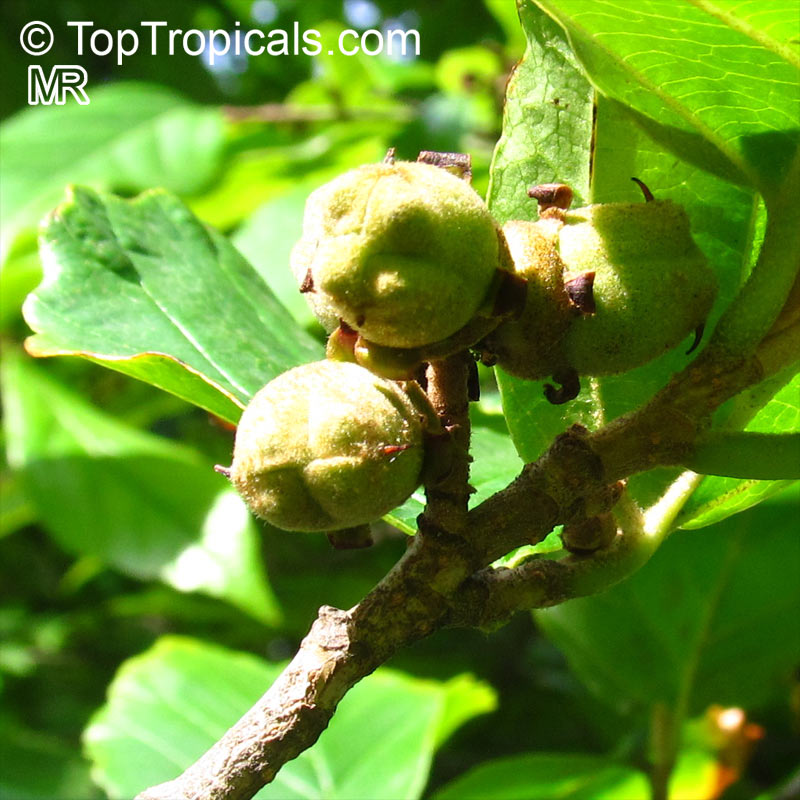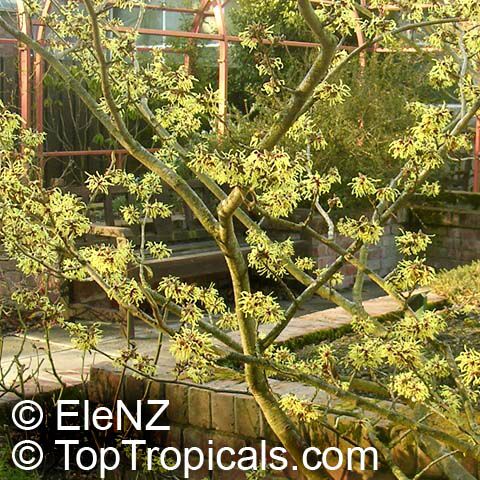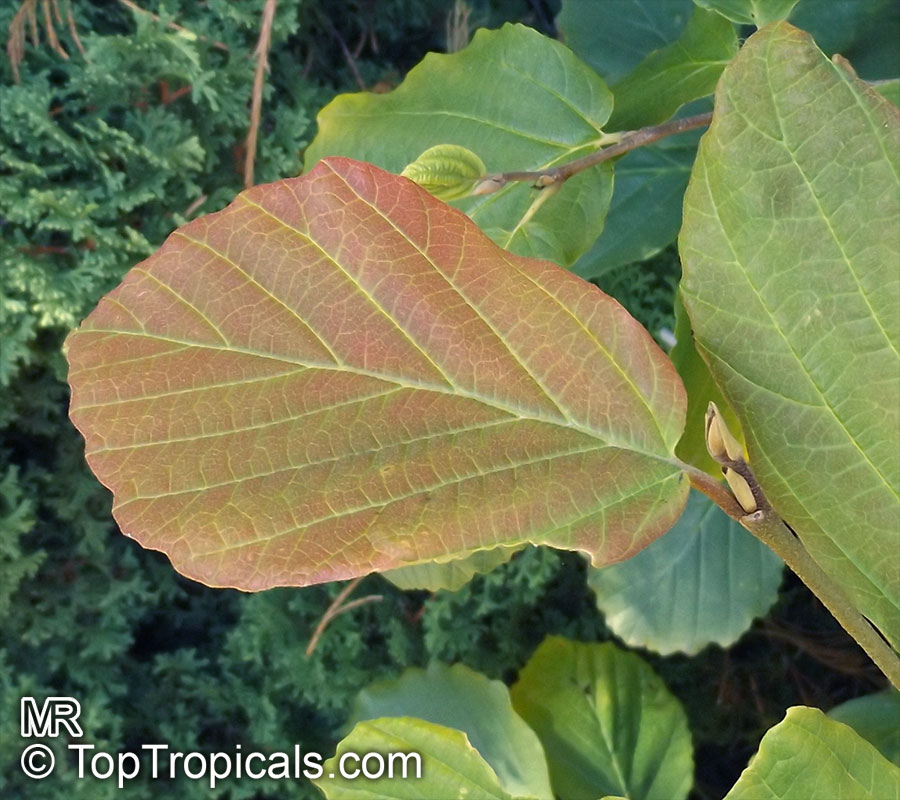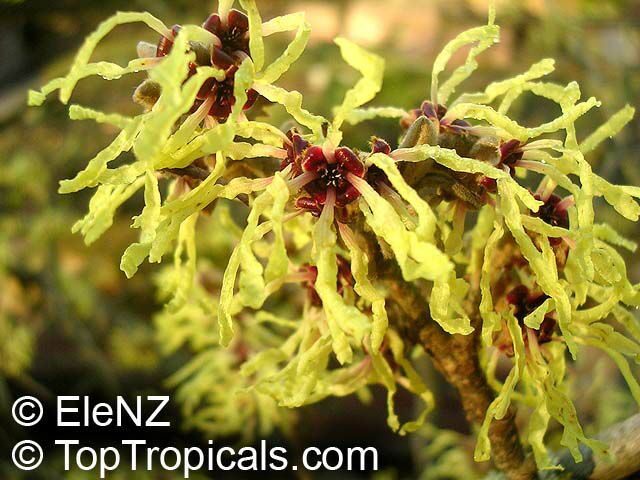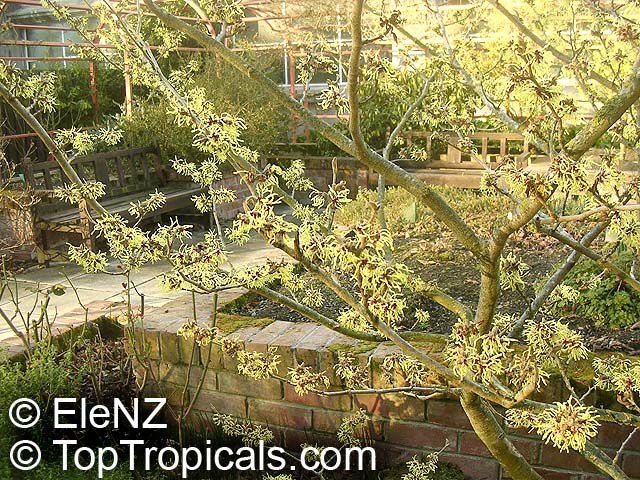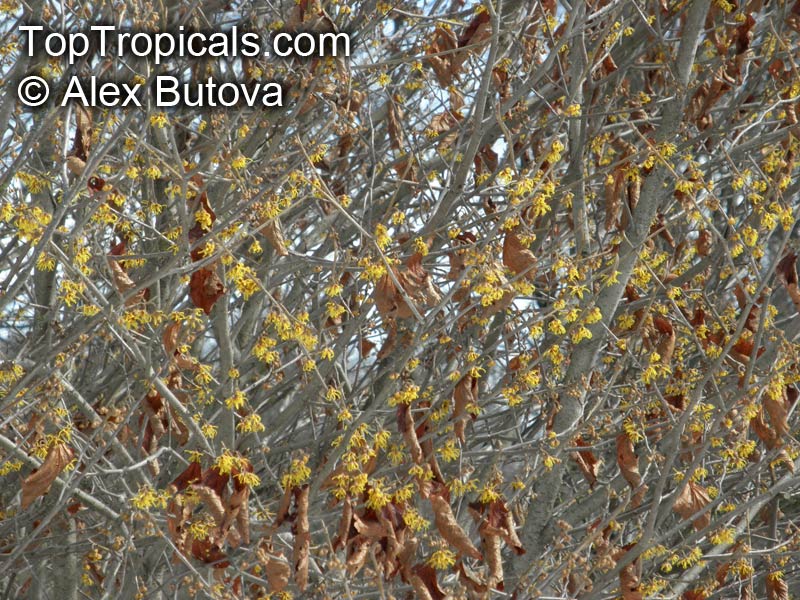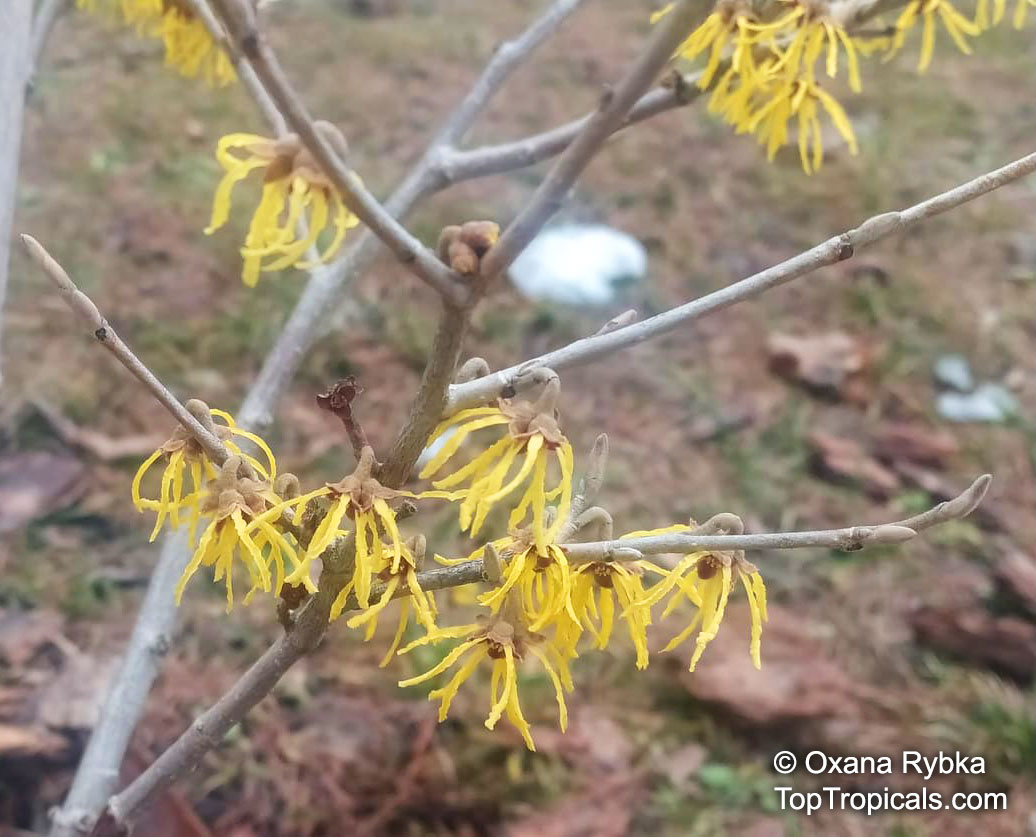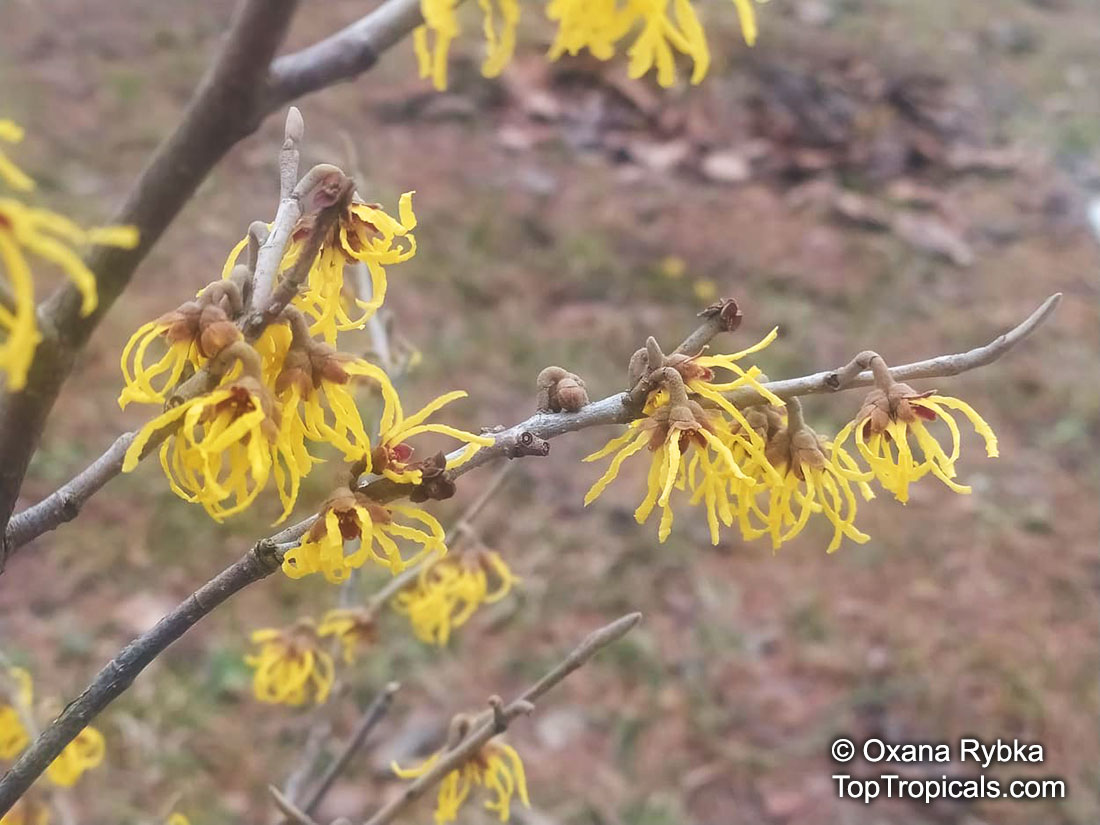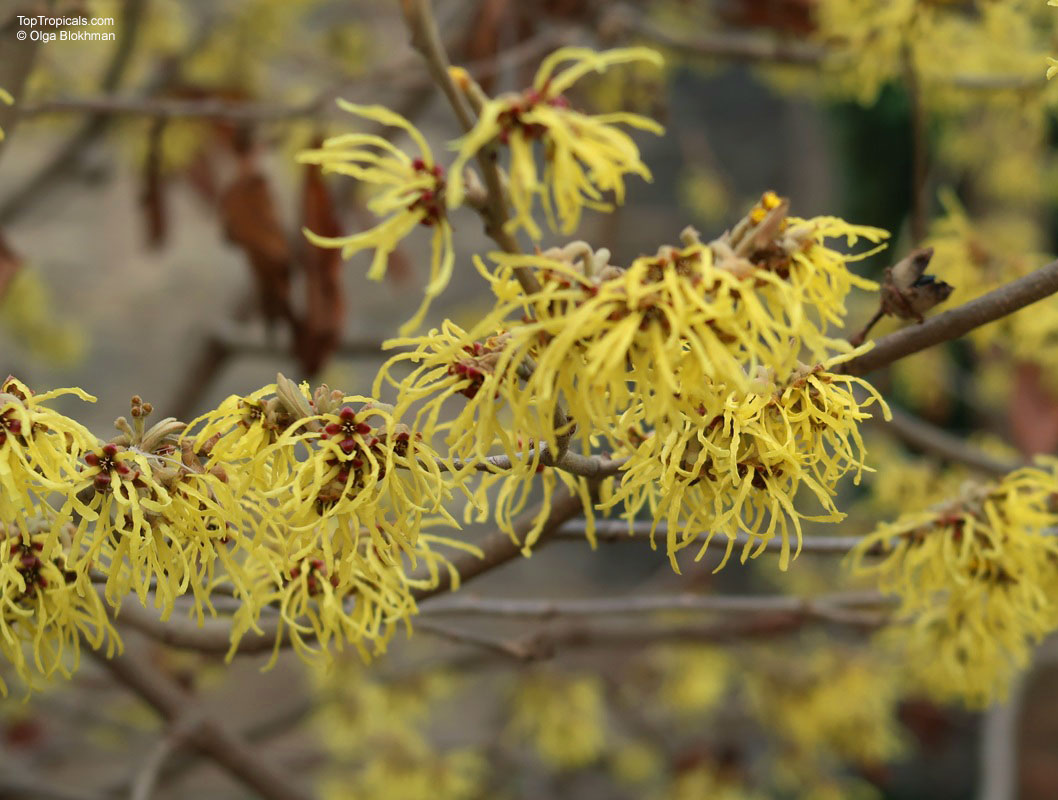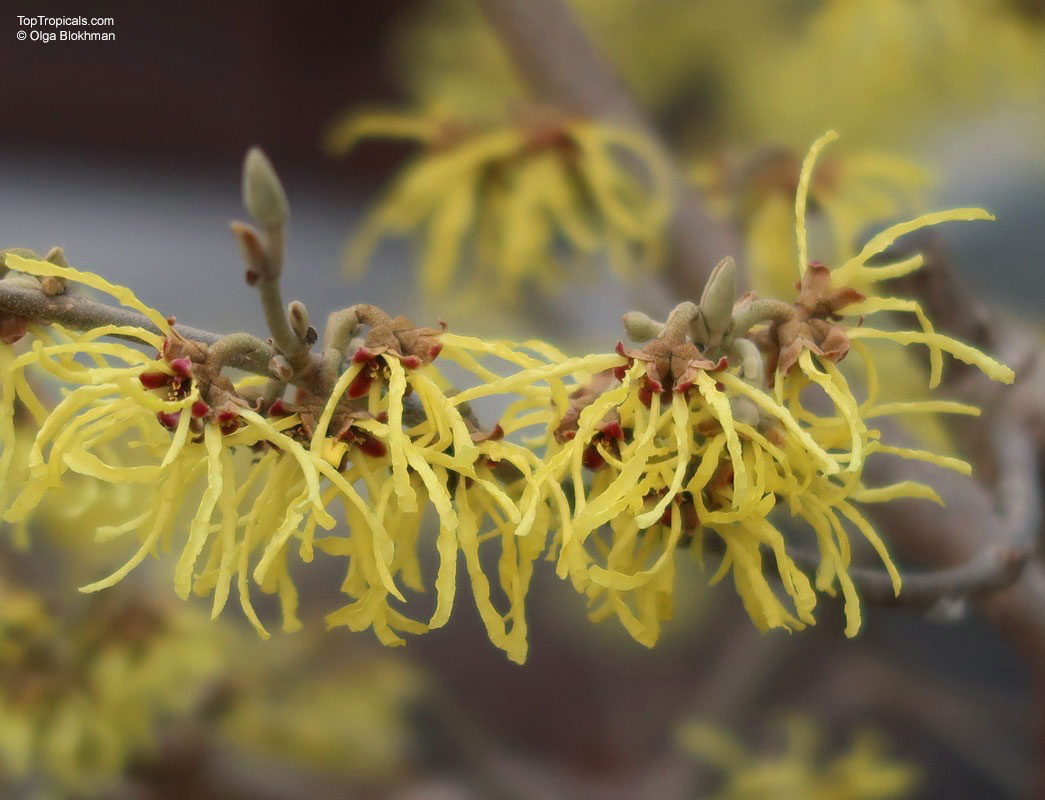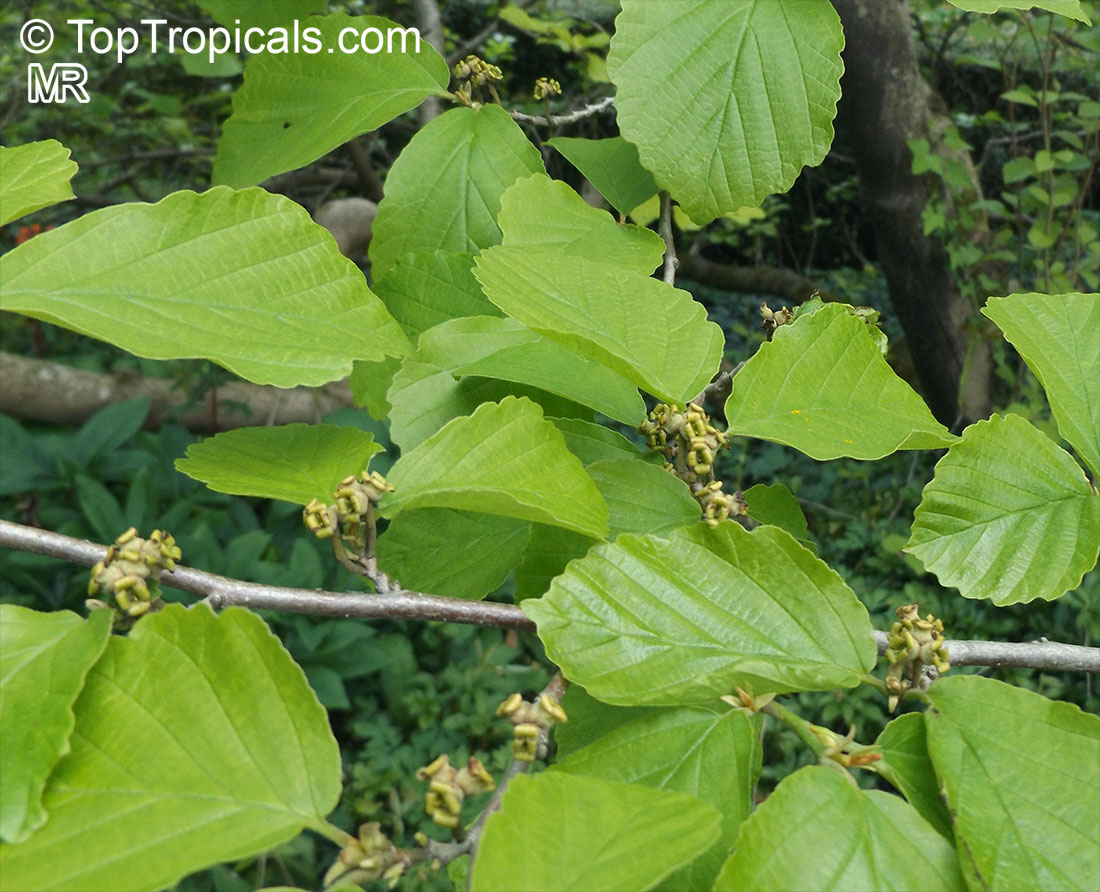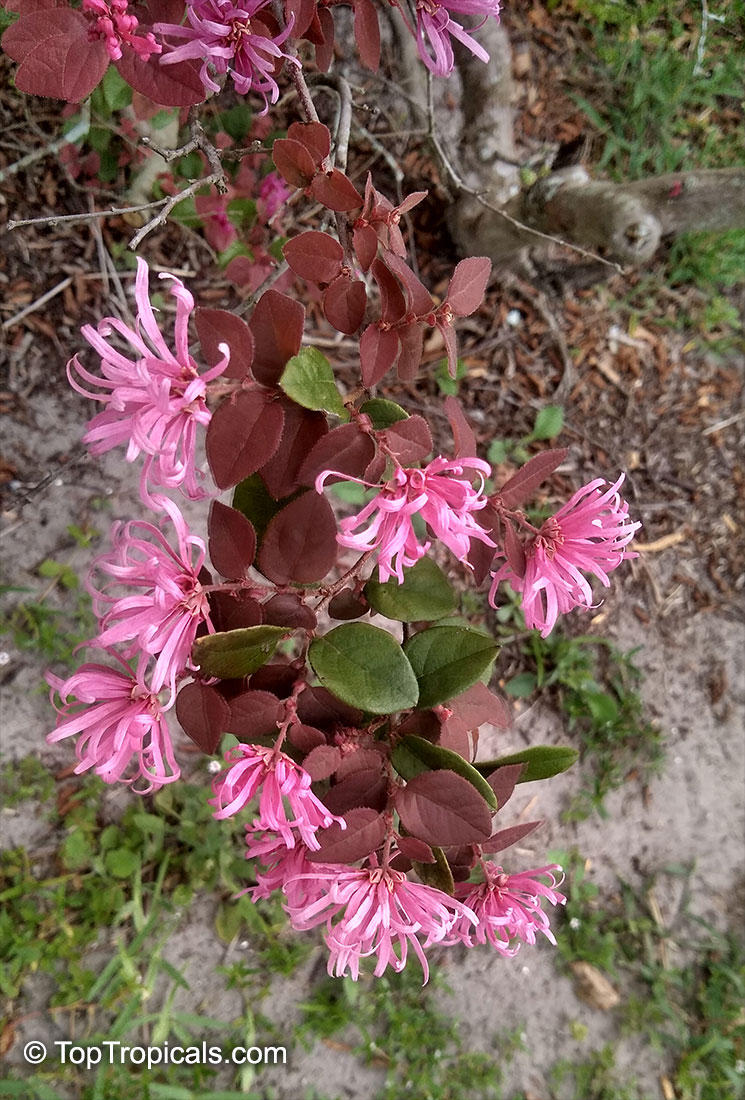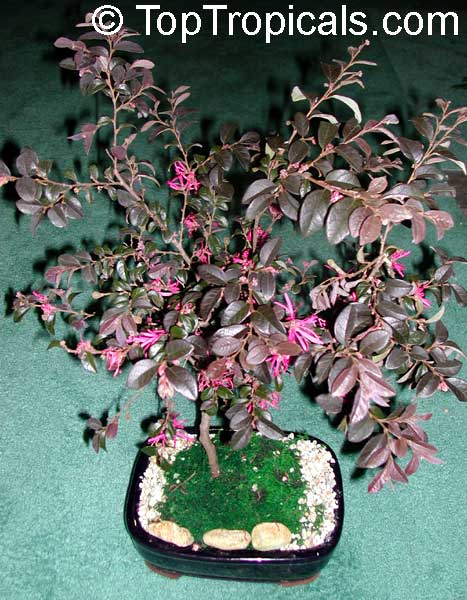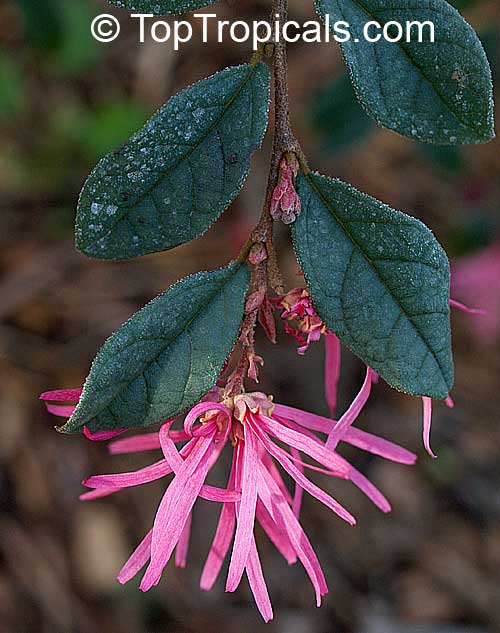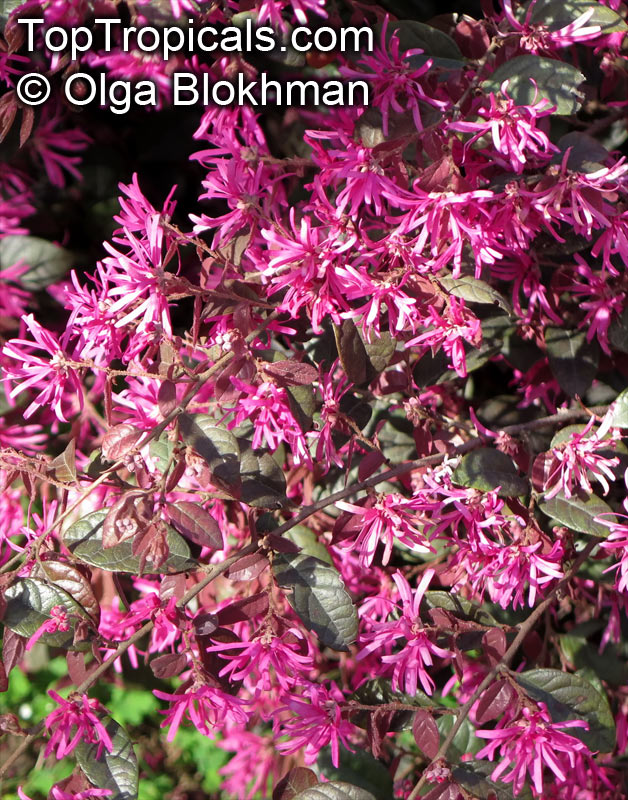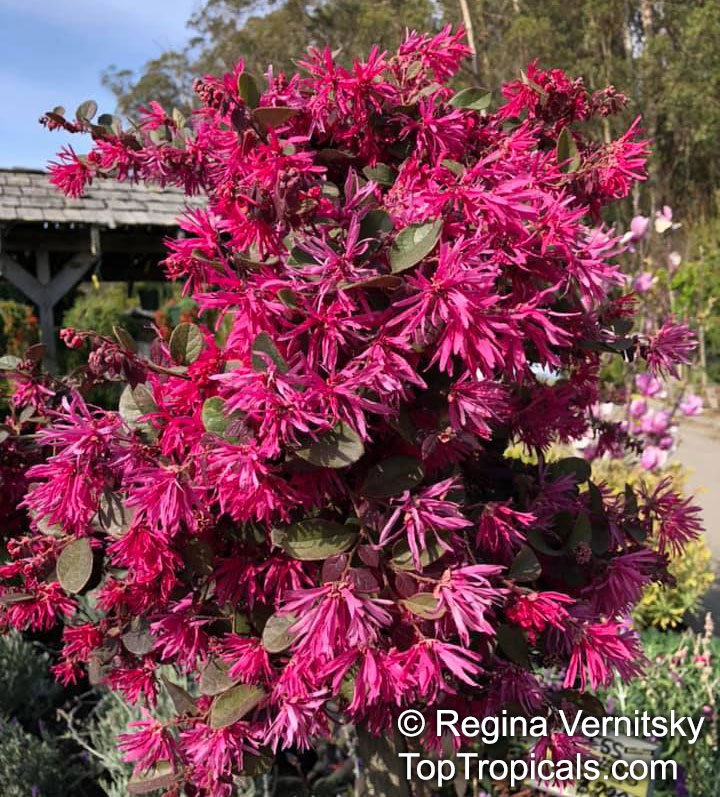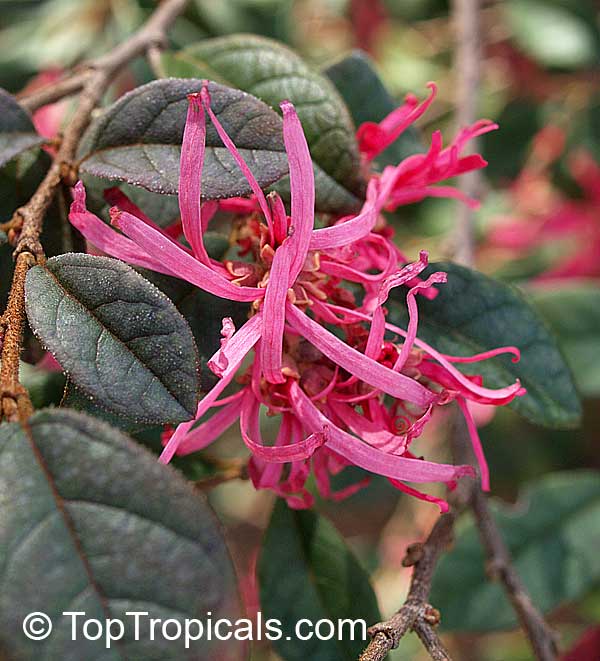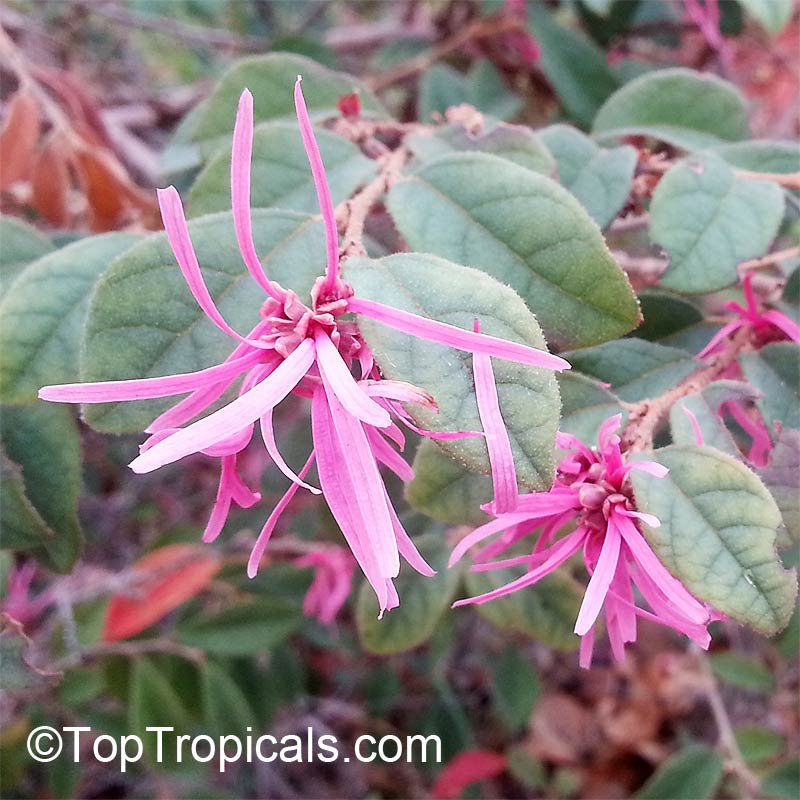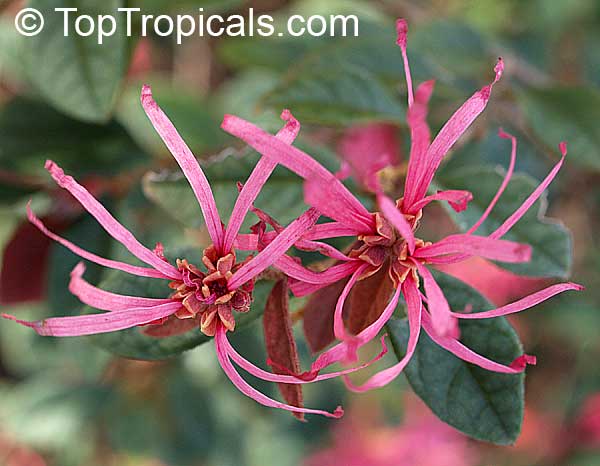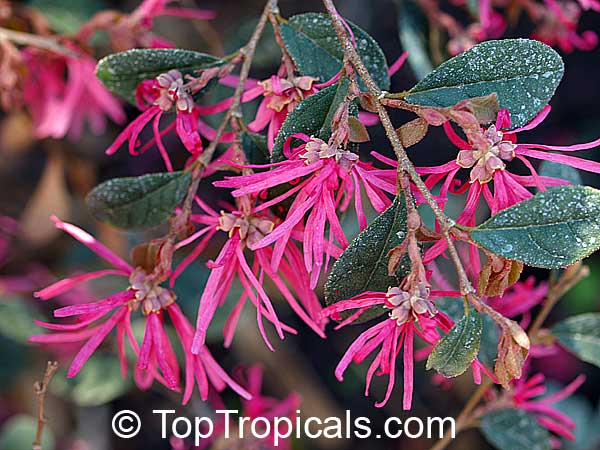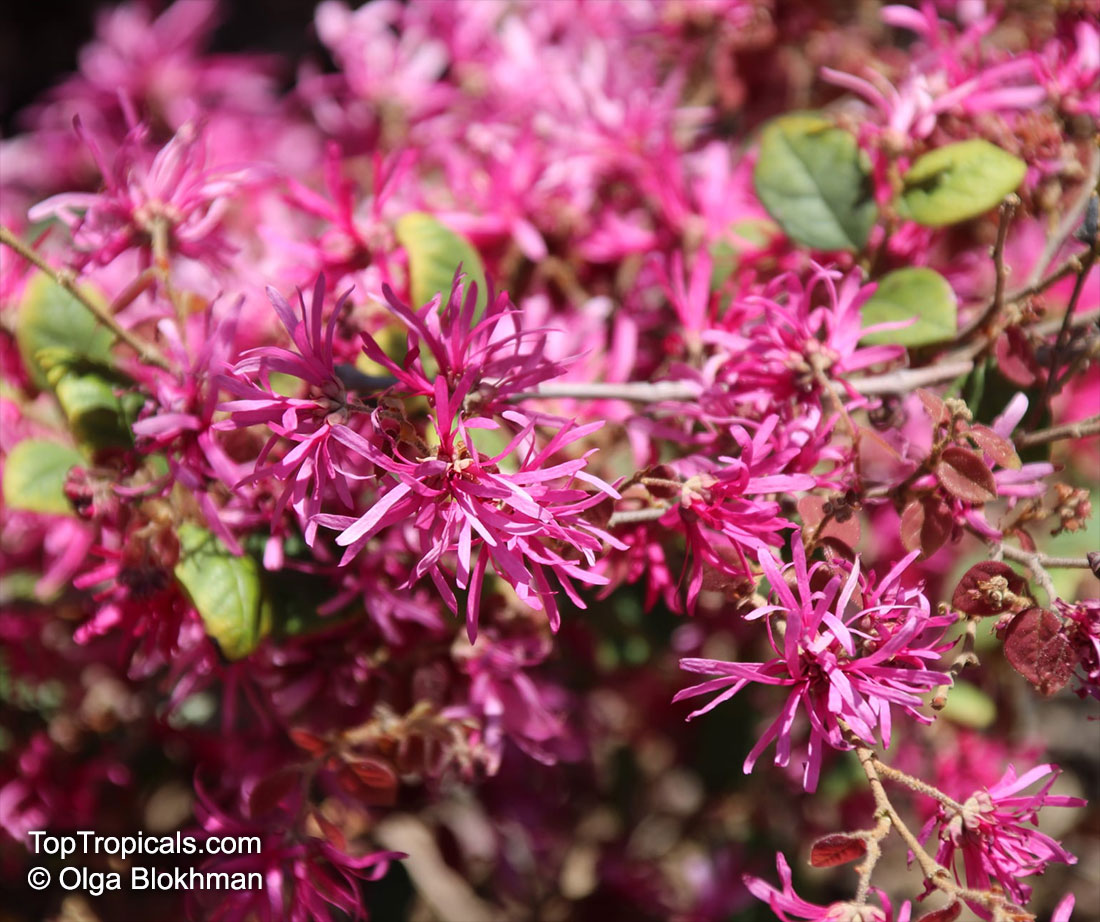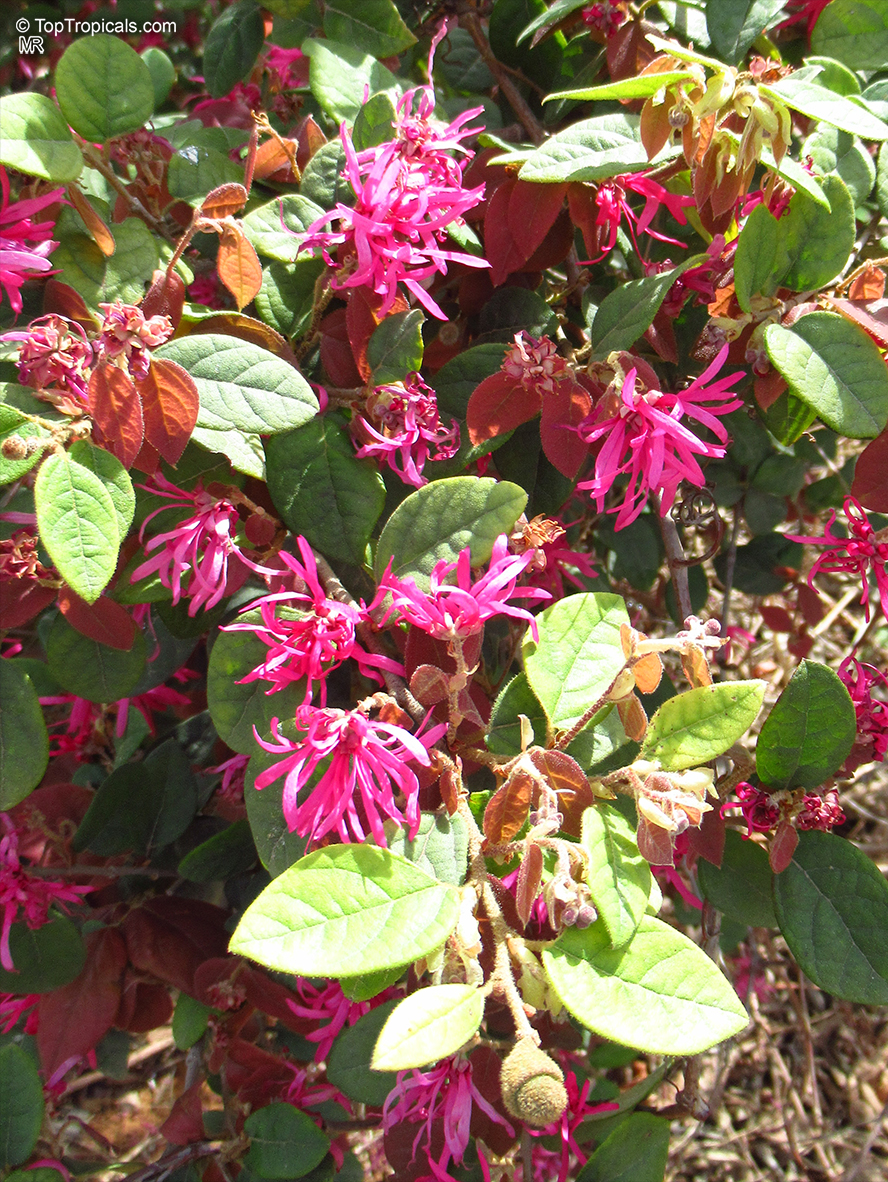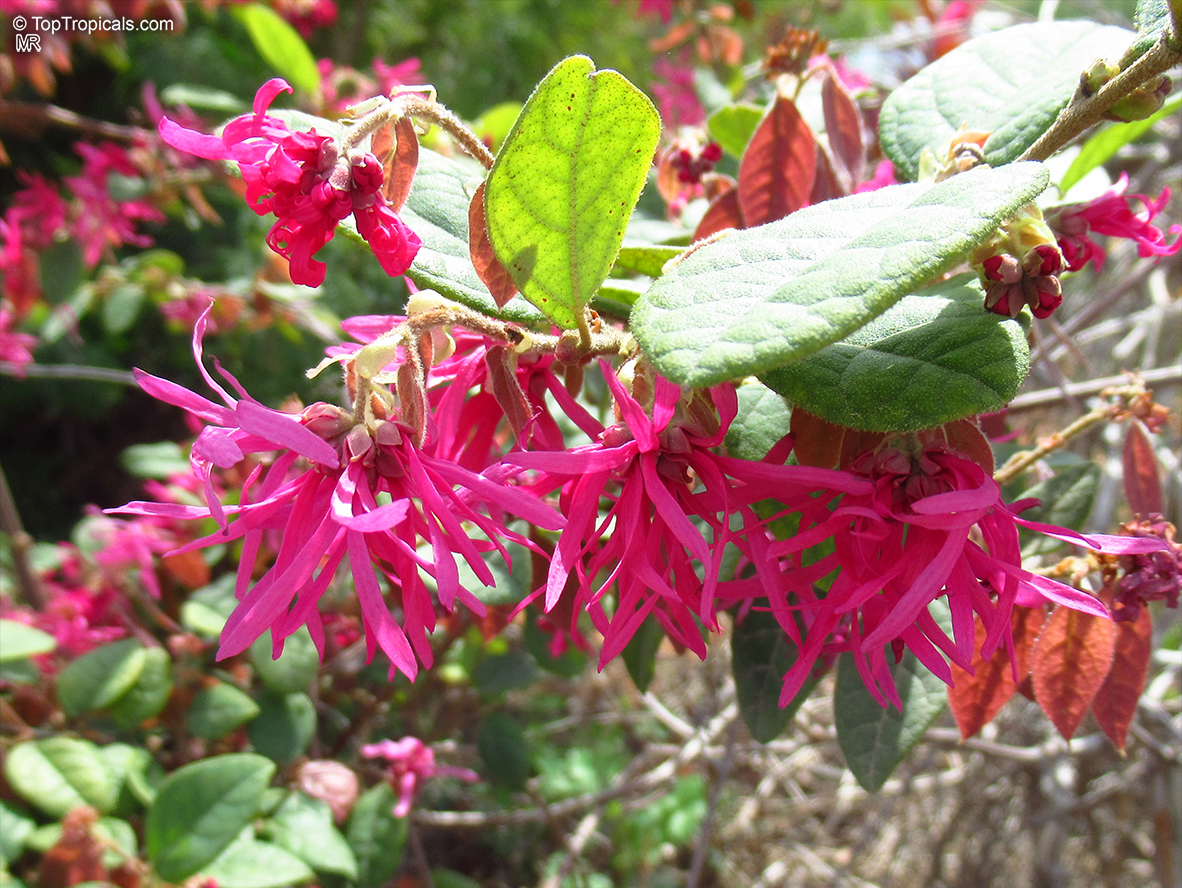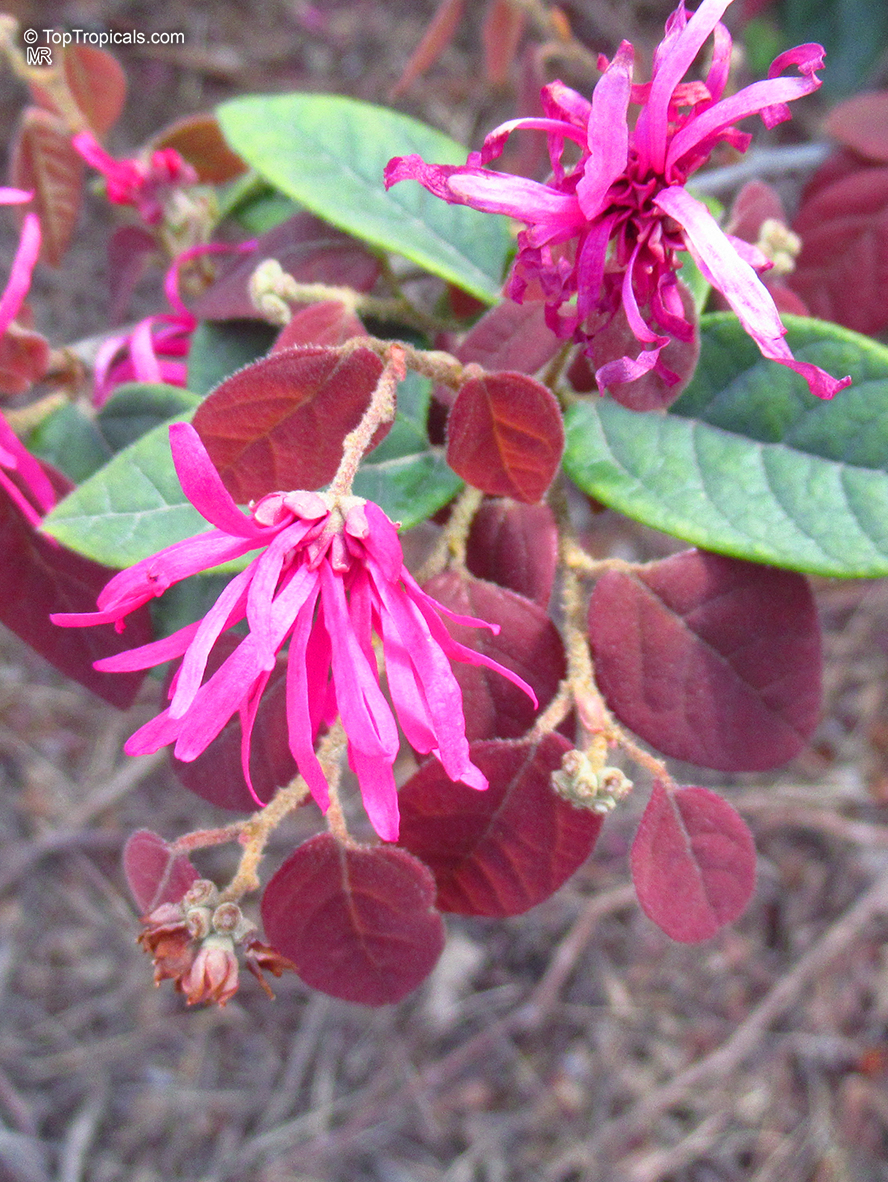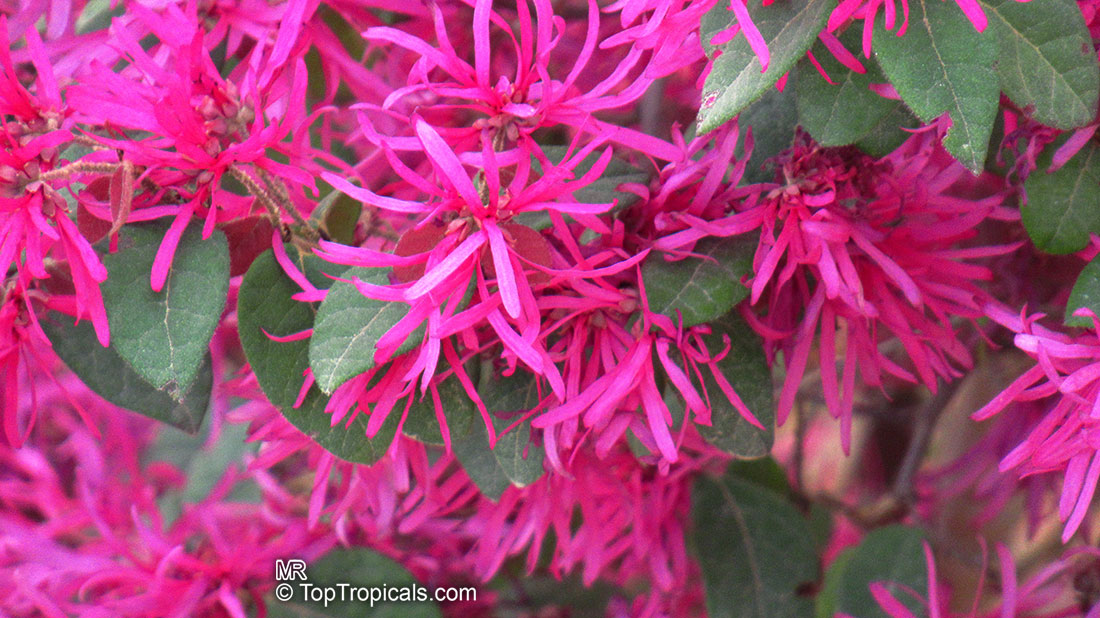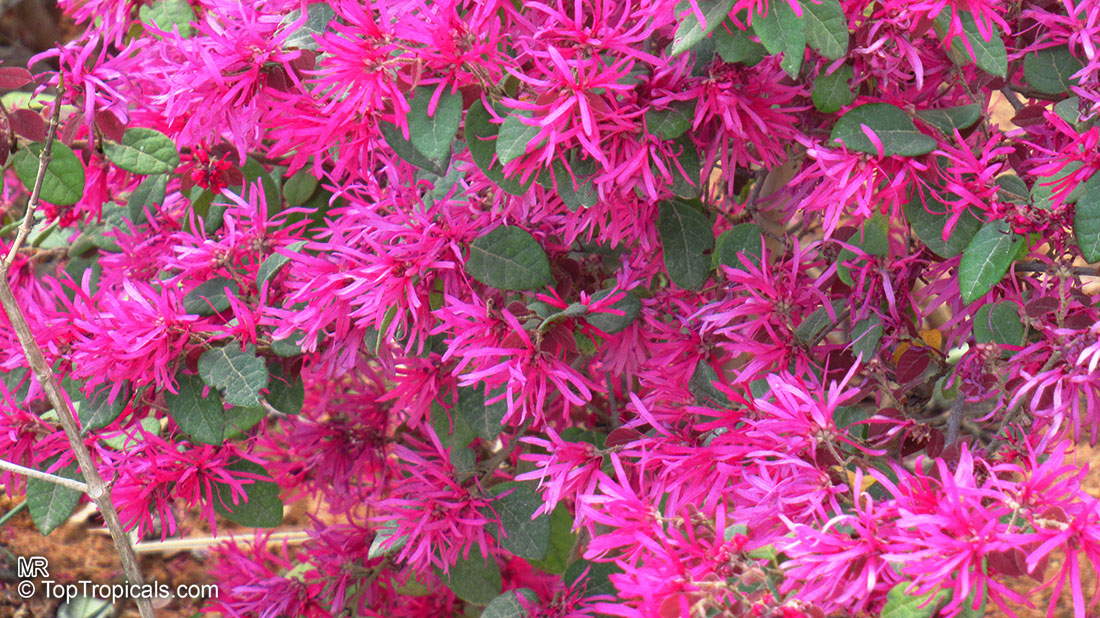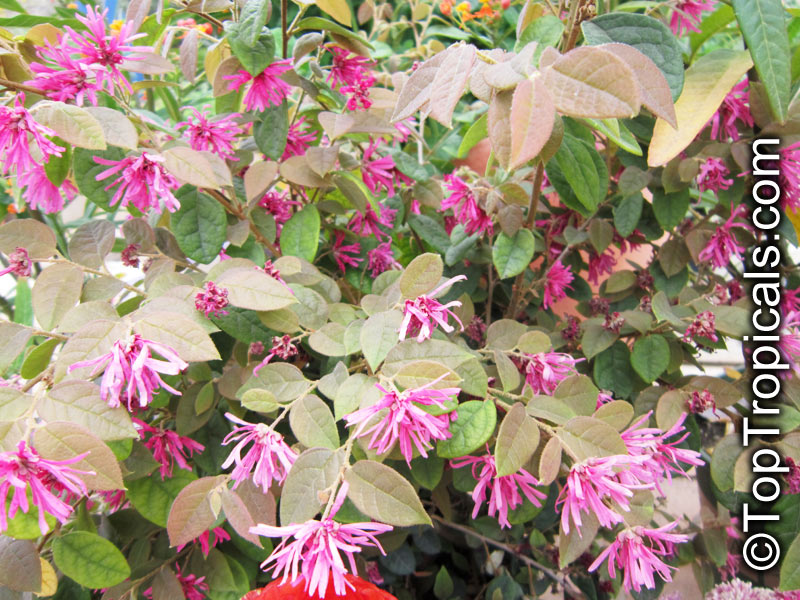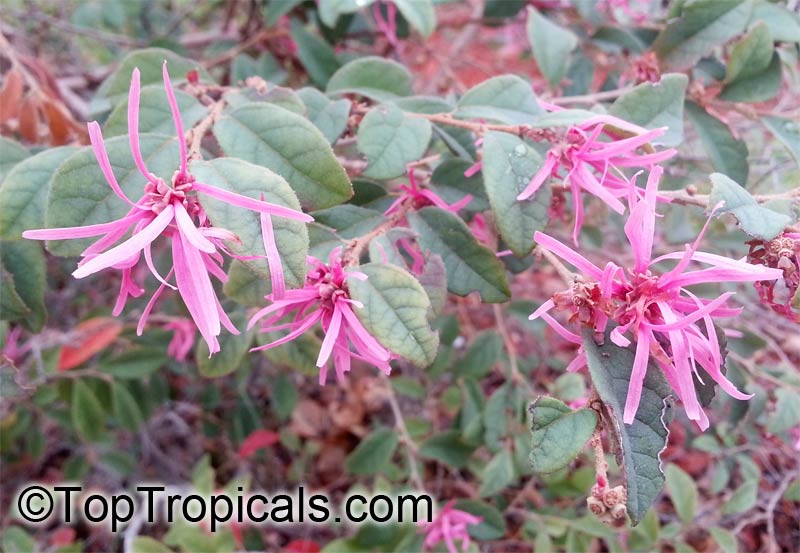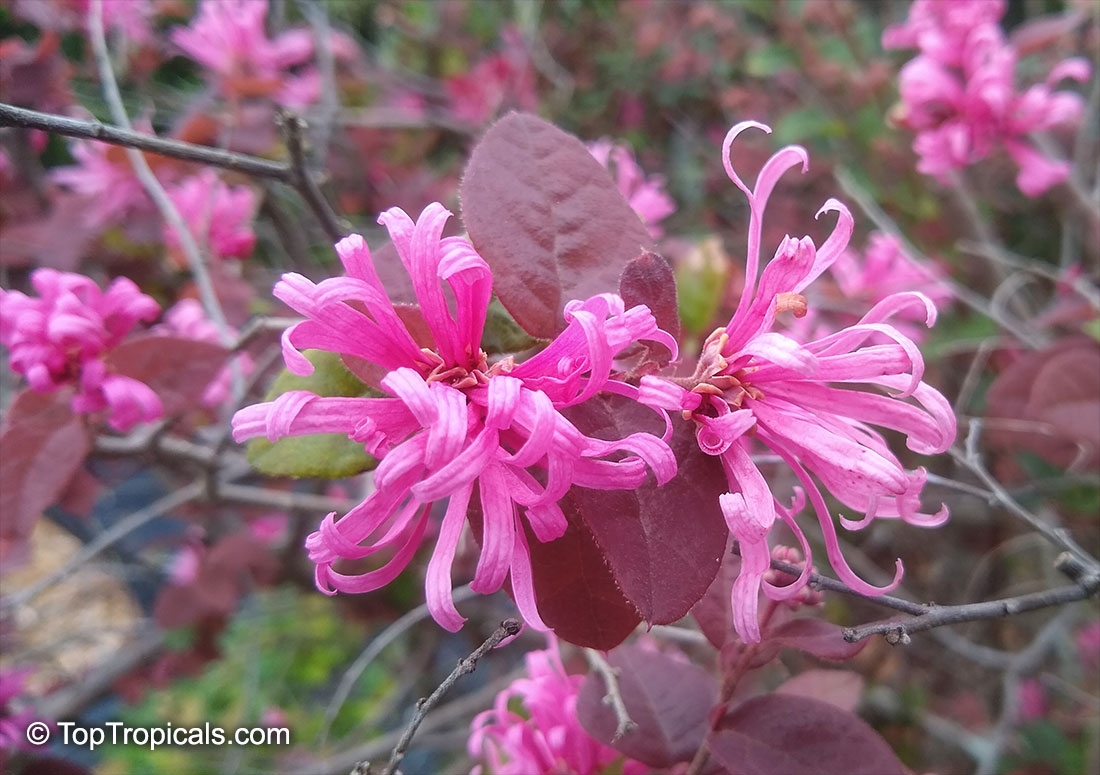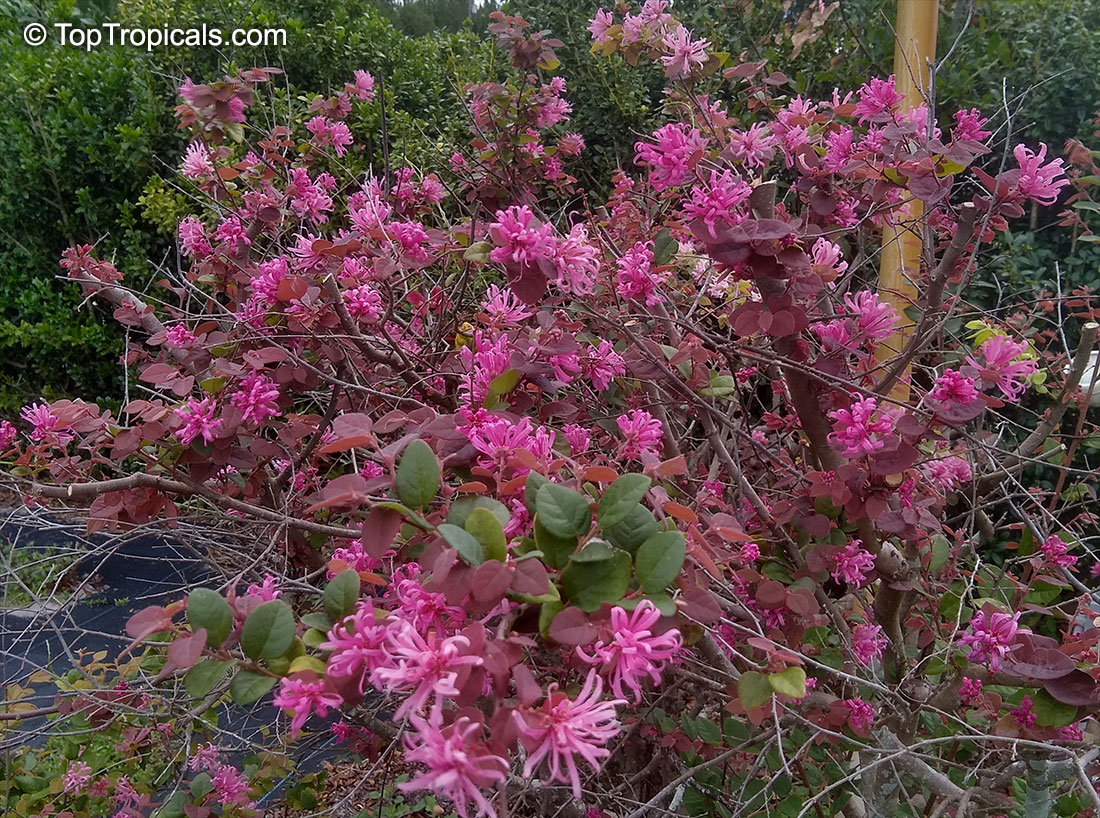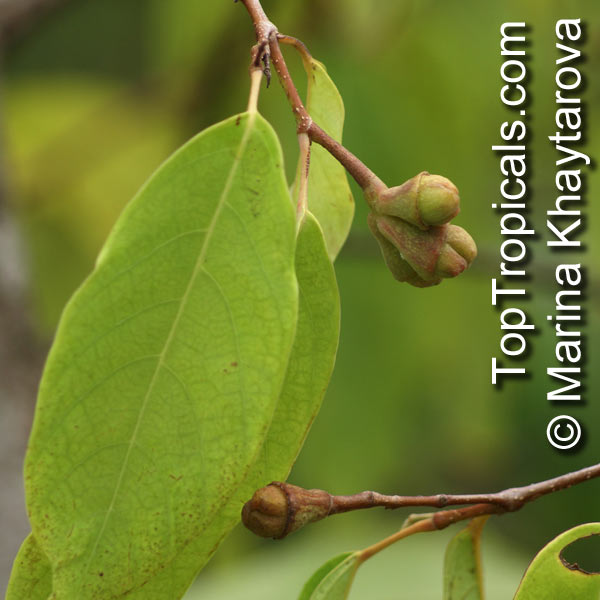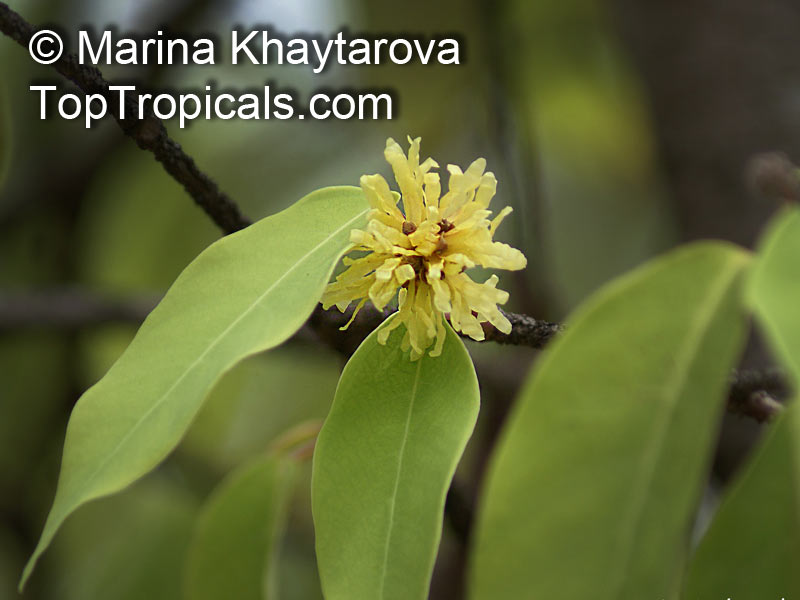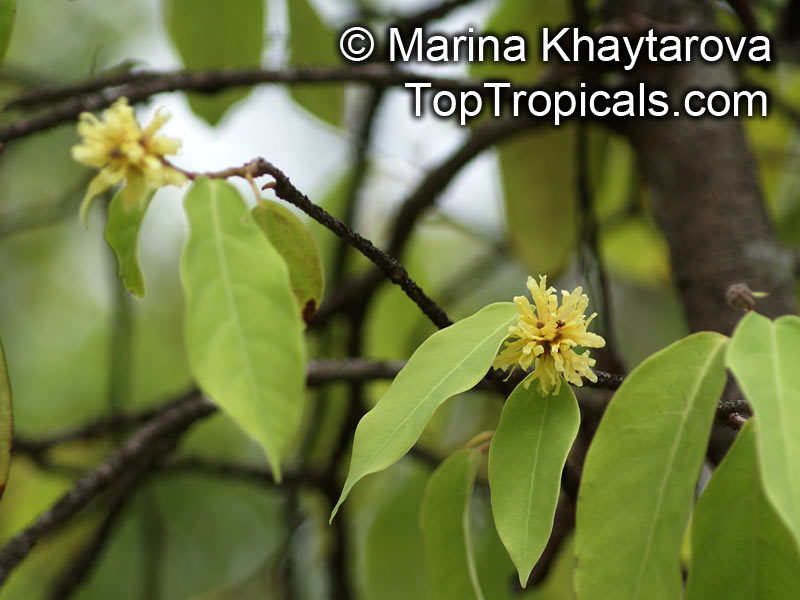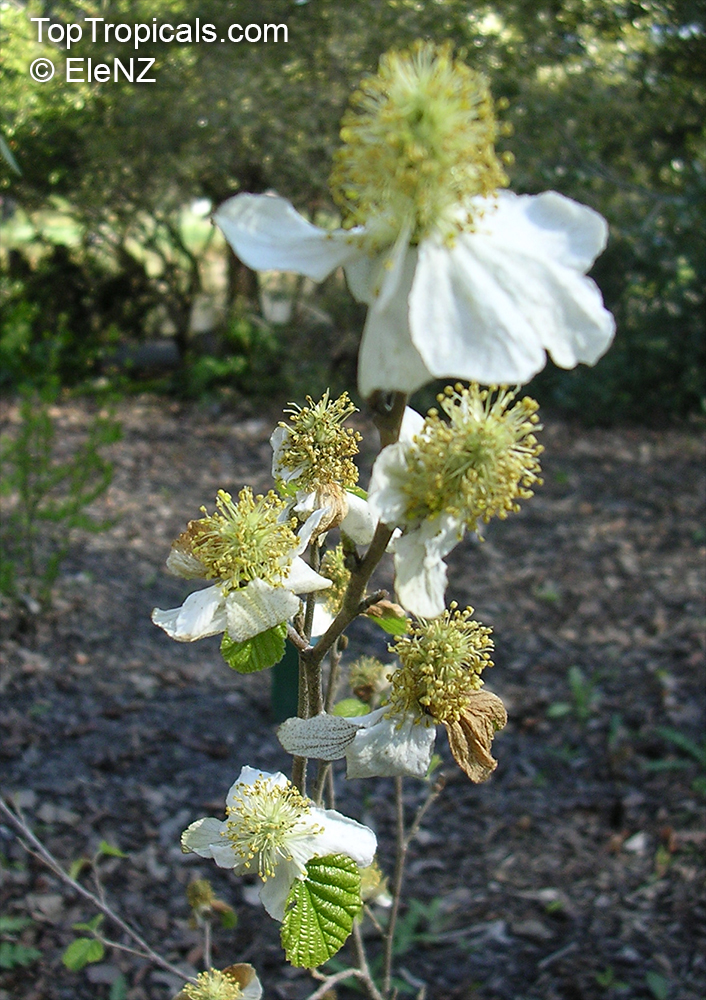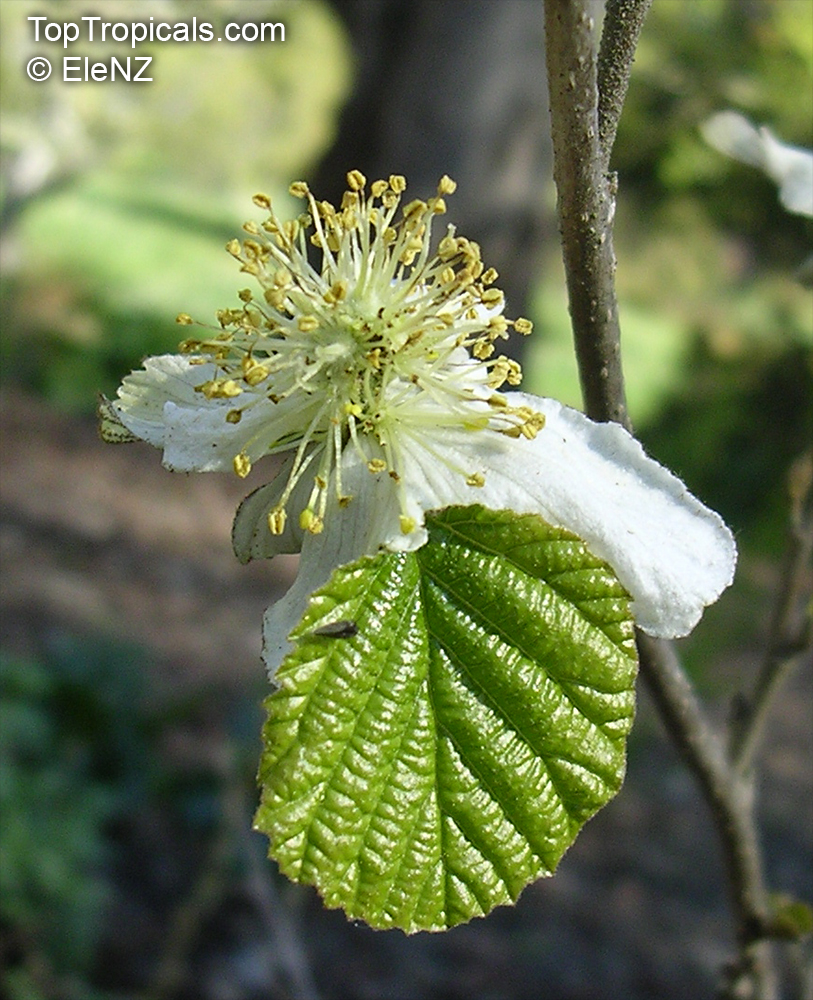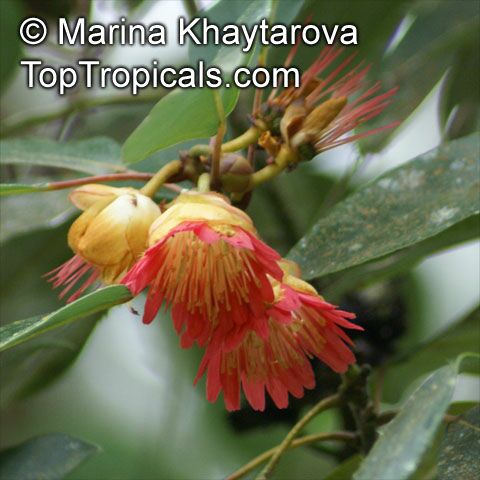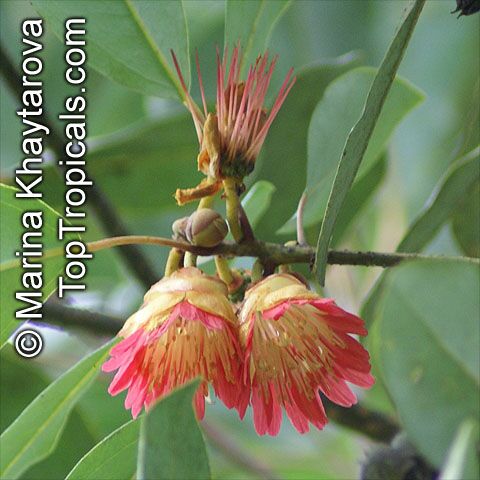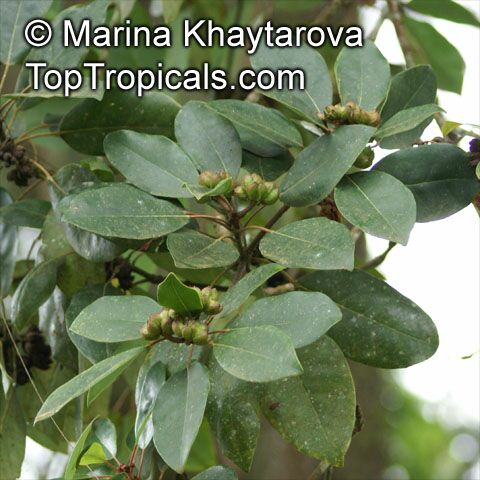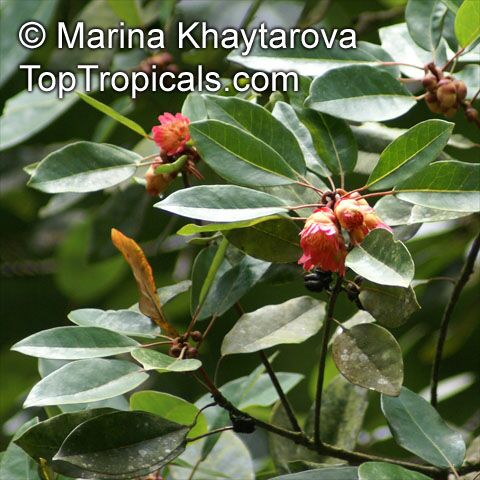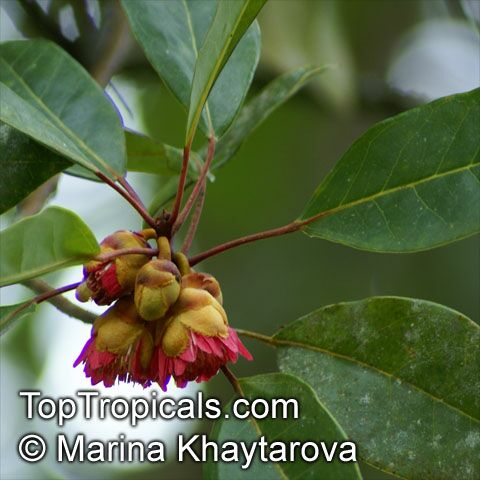Hamamelidaceae - Botanical Family
Top Tropicals Plant Encyclopedia
| Number of plants found: 8 |
Botanical name: Corylopsis pauciflora
Common name: Buttercup Winter Hazel
Family: Hamamelidaceae
Origin: Japan, Taiwan








Corylopsis pauciflora, commonly known as Buttercup Winter Hazel, is a deciduous shrub that is native to Japan and Taiwan. It can reach heights of 5-10 feet and sheds its leaves during the winter months. This plant prefers full sun or semi-shade and moderate water, with some extra water necessary in cooler climates. It can tolerate moderate foot traffic and air pollution.
The Buttercup Winter Hazel is known for its fragrant yellow and orange flowers that bloom in late winter, providing color to the garden when most vegetation is still dormant. This shrub is best grown in USDA zones 6-9. It is resistant to most common ailments and pests, making it easy to care for.
For those living in cooler regions, the Buttercup Winter Hazel can be grown in a pot with soil that retains moisture. During the winter months, the pot should be insulated with bubble wrap or a similar material to prevent damage from extreme cold.
Corylopsis pauciflora is a beautiful shrub that is hardy and easy to maintain, making it a great choice for any garden.
Botanical name: Fothergilla gardenii
Common names: Dwarf Fothergilla, Coastal Fothergilla
Family: Hamamelidaceae
Origin: North America










A large deciduous shrub up to 5-10 feet tall, Dwarf Fothergilla (Fothergilla gardenii.) is native to North America and produces off-white to white flowers in the spring.
This plant is ideal for natural and native gardens, as it will attract numerous butterflies and hummingbirds and is also known to be deer resistant. Dwarf Fothergilla is also a great ornamental as its bright white flowers stand out against its bright foliage during late spring and early summer. For optimum growth, plant it in full sun or semi-shade and be sure to give it regular water when its foliage begins to develop in the spring and summer months.
In addition to the plant's normal needs, those living in colder climates should provide extra care for Dwarf Fothergilla. It is best grown in USDA hardiness zones 4 -8. This helps to ensure that your plant will survive the frosty months and enjoy sunshine once spring arrives.
Dwarf Fothergilla is an excellent choice of shrub that can add fragrance and color to any garden. With the right amount of sun and water, combined with the proper care during cold winter months, this shrub can bring delight with its white flowers, and striking foliage.
Botanical name: Hamamelis mollis
Common name: Chinese Witch Hazel
Family: Hamamelidaceae
Origin: East Asia
Hardiness: -10°F










Chinese witch hazel, is a beautiful shrub that lights up the winter landscape and perfumes the air with its unmistakable sweet, spicy fragrance. Prefers full shade to full sun; soil should be moist.
Hamamelis x intermedia is a hybrid of garden origin between H. japonica and H. mollis. Hamamelis x intermedia Arnold Promise' is an unusual witch hazel, bearing bright golden flowers that curl up more than other varieties, giving it a more delicate appearance.
Botanical name: Hamamelis virginiana
Common name: American Witch-Hazel
Family: Hamamelidaceae
Origin: Eastern North America








Hamamelis virginiana, commonly known as the American Witch-Hazel, is a native deciduous plant of Eastern North America from the Hamamelidaceae family. This large shrub reaches between 5 to 10 feet in height and grows best in full sun or semi-shaded locations and requires regular watering for optimal growth. The bright yellow to orange blooms, which appear in clusters, blossom in mid-fall and last until late fall.
The foliage of the American Witch-Hazel turns vibrant shades of yellow, orange and red during the autumn months before falling and leaving the plant semi-dormant during winter. The plant tolerates cold temperatures down to 30s F for a short time and is mature cold hardy in USDA Zones 9 to 11.
In regions that experience harsher winters, American Witch-Hazel can be grown in pots and brought indoors. To ensure the health of the plant, it should be kept in soil which is well-draining and the pot should be placed in a sun-filled, yet cool spot indoors. Water regularly and keep the soil slightly moist throughout, but be careful not to overwater. During the late winter and spring months, the plant will require a slightly higher fertilizer dosage to promote healthy growth, with a potentially higher rate of organic nutrients.
The American Witch-Hazel has many ethnomedical uses and is known for its astringent shell extract and healing properties. Tea brewed with the leaves and bark have long been used to treat pain and inflammation. Additionally, the extract is used in various beauty and skincare products, while the leaves are used in dried flower arrangements.
Botanical name: Loropetalum chinense
Common name: Silk Ribbon Flower
Family: Hamamelidaceae







Compact evergreen shrub with deep burgundy young foliage color that turns dark green as plant matures. Pink strap-like flowers cover the arching branches in spring.
Botanical name: Maingaya malayana
Common name: Penang Hazel
Family: Hamamelidaceae
Origin: Malaysia





A rare monotypic genus with the sole species endemic to Penang Hill.
Botanical names: Parrotiopsis jacquemontiana, Parrotia jacquemontiana
Common name: Parrotia
Family: Hamamelidaceae
Origin: East Asia







Botanical name: Rhodoleia championii
Common name: Hong Kong Rose
Family: Hamamelidaceae
Origin: South East Asia






Use link to repeat this search:
https://toptropicals.com/cgi-bin/garden_catalog/cat.cgi?search_op=and&keyword_op=and&language=e&family=Hamamelidaceae
&number=10&no_change_lang=1&user=tt&sale=1&first=0
